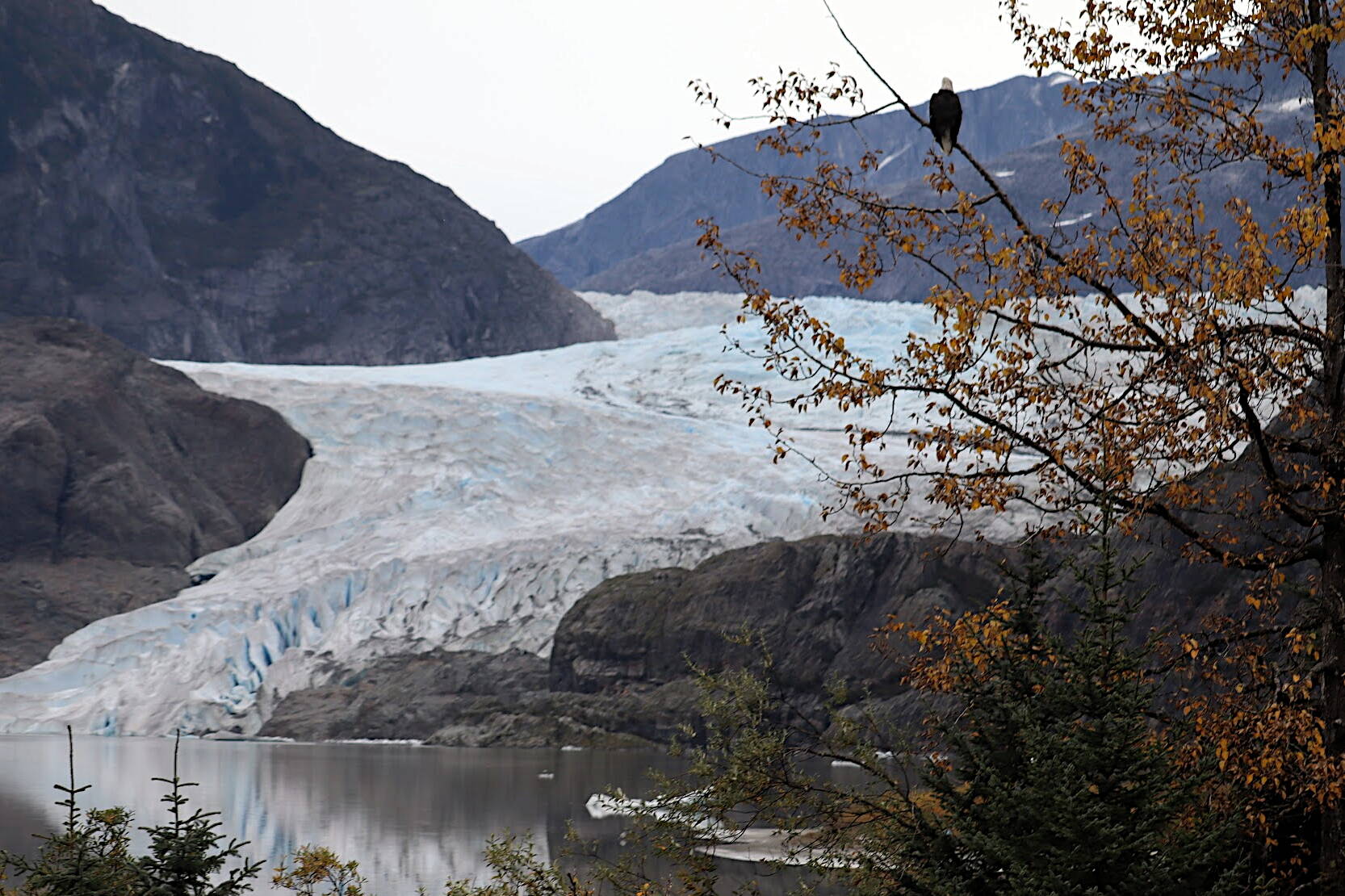There are no plans to strip mine or drill for oil in the Mendenhall Glacier Recreation Area, and seemingly little interest or potential in doing so, but people wanting to weigh in on a federal proposal officially prohibiting such activity can do so until Oct. 31.
The glacier’s retreat means exposing new land that in theory is open to potential mineral extraction claims, which the U.S. Forest Service as the manager of the recreational area is seeking to prevent. The agency is requesting the U.S. Secretary of the Interior withdraw about 4,560 acres from mining laws and leasing for at least 20 years.
Much of the argument in favor of the proposal focuses on how newly exposed areas will likely see heavy recreational use as the glacier vanishes from view of the existing visitor center.
“This withdrawal would be beneficial in preserving and protecting the unique characteristics and outstanding beauty of the area,” a draft environmental impact statement published this month by the Forest Service states. “Visitors would continue to enjoy this area and experience high quality recreation opportunities. In the future, new recreation and interpretation experiences that emphasize the area’s outstanding scenery and wildlife resources, even as the glacier recedes, will continue to be enhanced and protected with this alternative.”
The report clearly suggests the Forest Service envisions putting the area off-limits to mineral extraction activities far beyond the initial 20-year period, which it can do via renewal requests to the Interior Department. The Forest Service notes, for example, the approximately 620,000 people who visited the recreation area in 2019 is expected to increase to as many as 1 million visitors by 2050, at which point “the terminus of the glacier is expected to recede from view from the existing visitor center by 2050, and new recreational opportunities are emerging where the glacier once sat.”
“The changing landscape, new recreational opportunities, and the increasing visitor demand resulted in the need to reevaluate the plans for the recreation area and visitor center,” the EIS states.
At present there seems to be little controversy about the proposal, since none of the public comments received since an initial application was submitted in June of 2021 have opposed closing the area to mining for a 20-year period. There are a few comments such as seeking reassurance the Forest Service isn’t trying to make such bans “a general policy to be applied where glaciers are receding,” and questioning the impact of a ban on hunting and trapping in the proposed area (which the Forest Service states is governed by entirely different regulations).
There also seems to be little industry interest since there’s been no prospecting or exploration for minerals since 1989, at least that the U.S. Bureau of Mines is aware of, according to Heidie Torrealday, a Forest Service geologist, in an Aug. 30 report assessing potential mineral assets in the newly proposed ban area.
“There is a documented occurrence of a small zinc and copper anomaly near the southeastern boundary of the selected lands, however any development potential is considered low as the area is difficult to access and site conditions challenging and aerial extent considered small given the proximity of the mineral occurrence to the Mendenhall Glacier,” Torrealday wrote. Furthermore, “the lack of closed or current federal or state claim locations associated with this occurrence indicates there has been little interest in advancing mineral exploration and development of these lands.”
While some commenters opposed to mineral extraction said they favor a permanent ban in the area, the Forest Service states it appears that cannot happen without congressional approval.
The boundaries for the proposed area begin on the glacier a short distance from the existing face, stretch out a few hundred yards to the land on both sides of the glacier, and extend in a roughly triangular pattern several hundred yards into the glacier and surrounding mountains. It is adjacent to a similar-size tract already off limits that extends from the glacier’s face across Mendenhall Lake and the surrounding terrain.
Half of the requested withdrawal area is covered by a glacier and therefore there is no history of exploration or mining activity within the requested withdrawal area, according to the Forest Service.
But despite the lack of past, present or seeming future mining activity, the agency did conduct a mandatory “reasonably foreseeable scenario” if the ban is not implemented. The conclusion is the possibility of mining is more than a merely theoretical possibility.
”A reasonably foreseeable scenario that could occur in the requested withdrawal area in the next 20 years is surface mineral exploration which would likely include diamond drilling, surface sampling, trenching, and mapping,” the draft EIS states. Impacts would likely include transporting personnel and equipment to the site exclusively by helicopter between June and November, which are peak tourism months at the glacier, with resulting environmental impacts on the landscape, wildlife and water runoff in the vicinity.
For pro-mining folks prospecting for a proverbial silver lining, the draft EIS states in its also-mandatory socio-economic analysis any exploration and extraction activities will benefit people employed in occupations related to those activities. Plus, of course, there’s the potential economic benefit of any revenue from extracted minerals.
• Contact Mark Sabbatini at mark.sabbatini@juneauempire.com

